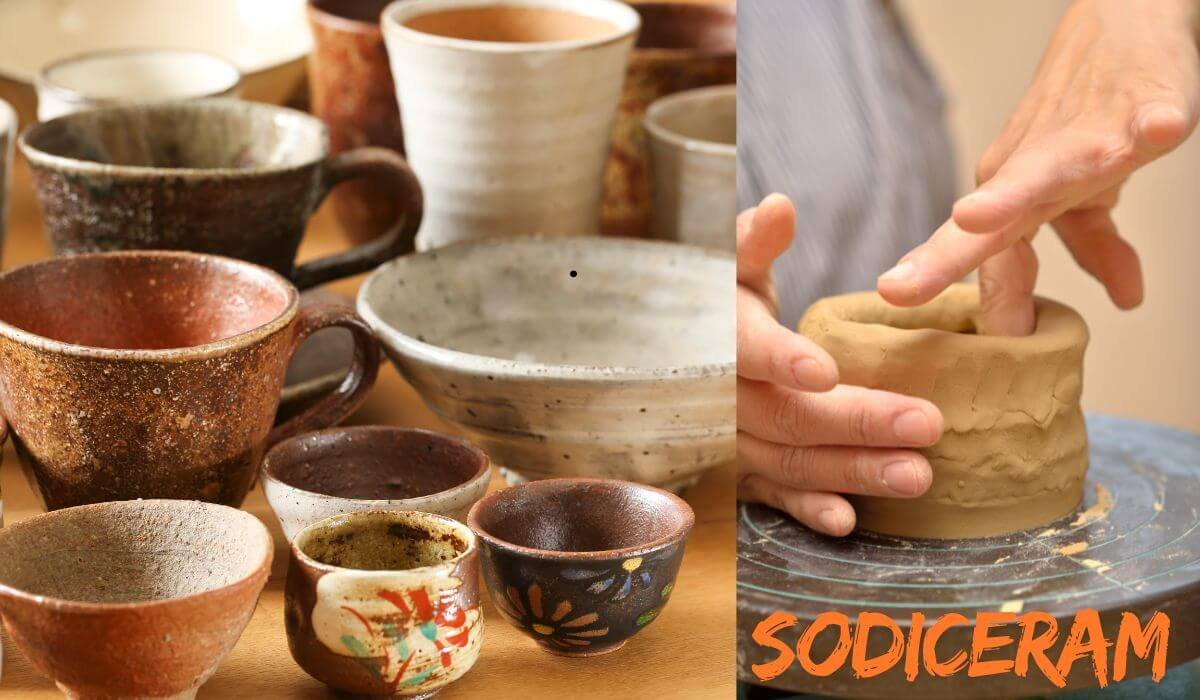Introduction
Sodiceram is a modern ceramic material known for its strength, style, and sustainability. It’s used in homes, offices, and public spaces for flooring, walls, and more. Durable, easy to maintain, and available in many designs, Sodiceram is a smart choice for anyone looking to combine beauty with long-lasting performance.
Let’s dive into the world of Sodiceram, where function meets form in the most stylish way possible.
What is Sodiceram?
Sodiceram is a modern, high-performance ceramic material used widely in construction, architecture, and interior design. Known for its toughness, versatility, and stylish finish, it’s fast becoming a go-to choice for both homeowners and professionals alike.
Whether you’re tiling a bathroom, building a sleek kitchen backsplash, or upgrading public infrastructure, Sodiceram offers style and strength.
Origins and Background
A Brief History of Ceramics
Ceramics have been around since ancient times, from pottery to building materials. But over the past few decades, innovation in ceramic engineering has exploded.
The Birth of Sodiceram
Sodiceram was developed to overcome the weaknesses of traditional ceramics, offering a stronger, more adaptable material that meets modern design and durability needs.
Key Features of Sodiceram

Unmatched Durability
Sodiceram is made to last. It resists cracks, chips, and moisture better than traditional materials, making it ideal for high-traffic areas.
Aesthetic Appeal
From rustic stone looks to modern matte finishes, Sodiceram comes in a wide range of designs to fit every taste.
Chemical and Heat Resistance
Perfect for kitchens and labs, Sodiceram doesn’t react with chemicals or lose color when exposed to heat.
Eco-Friendly Composition
Manufacturers now focus on reducing environmental impact, using recyclable materials, and sustainable production methods.
Different Types of Sodiceram Products
Tiles
Used for floors, walls, and backsplashes. Durable and easy to clean.
Sanitary Ware
Think toilets, sinks, and basins made from advanced Sodiceram that resists stains and is easy to maintain.
Decorative Ceramics
Custom-patterned tiles and decorative pieces for artistic flair in both homes and commercial settings.
Benefits of Using Sodiceram
-
Longevity: It doesn’t wear out easily, even in tough environments.
-
Low Maintenance: Just a quick clean keeps it looking new.
-
Versatile Design: Available in countless styles, colors, and textures.
-
Cost-Effective: Long life and minimal upkeep make it a smart investment.
Common Applications of Sodiceram
Residential Spaces
Ideal for kitchens, bathrooms, and living rooms.
Commercial Interiors
Used in malls, offices, and hotels for both floors and walls.
Outdoor Environments
Sodiceram’s resilience makes it great for patios, driveways, and pathways.
Public Infrastructure
Hospitals, schools, and transport hubs benefit from its strength and hygiene properties.
How to Choose the Right Sodiceram Product
Consider the Room Type
A bathroom needs slip-resistant tiles. Living rooms? Go for aesthetic textures.
Think About Style
Choose from rustic wood looks to modern, minimalistic finishes.
Budget Wisely
Premium finishes cost more but last longer — it’s all about long-term value.
Installation Guide
What You’ll Need
-
Measuring tape
-
Adhesive
-
Tile cutter
-
Grout
-
Safety gloves
Installation Steps
-
Clean the surface.
-
Apply adhesive.
-
Lay the tiles.
-
Use spacers for even gaps.
-
Apply grout and wipe clean.
Pro Tips
Always dry-fit before applying adhesive. Let everything set for at least 24 hours.
Maintenance and Care Tips
Daily Cleaning
Wipe with a damp cloth or mop.
Removing Stains
Use mild detergent — no bleach or harsh chemicals.
Preventive Care
Use rugs in heavy-traffic zones and felt pads under furniture.
Comparison with Other Materials
Sodiceram vs. Porcelain
Both are strong, but Sodiceram often offers more design flexibility.
Sodiceram vs. Natural Stone
Sodiceram is easier to maintain and less porous.
Sodiceram vs. Vinyl
Vinyl may be cheaper, but it lacks the long-lasting quality and feel of ceramic.
Environmental Impact of Sodiceram
Sustainable Practices
Many manufacturers recycle water and raw materials during production.
Recyclability
Old tiles can be crushed and reused in construction.
Energy Efficiency
New kilns reduce emissions and consume less energy during the firing process.
Innovations in Sodiceram Technology
Digital Printing
Allows for realistic textures and patterns, from marble to wood.
Slip-Resistant Surfaces
Safety-first tiles for wet areas.
Smart Ceramics
Some variants now include embedded sensors for temperature or pressure.
Leading Brands Offering Sodiceram
-
Brand A: Known for cutting-edge designs
-
Brand B: Champions sustainable manufacturing
-
Brand C: Offers budget-friendly collections
Look for certifications and customer reviews when choosing.
Customer Reviews and Testimonials
“We installed Sodiceram tiles in our café — they still look brand new two years later!” – Jenna L., Business Owner
“So easy to clean and super stylish. Love the texture.” – Kevin M., Homeowner
Cost Analysis and Affordability
Price Range
Varies from $5 to $25 per square foot, depending on finish and brand.
Installation Costs
Add $3–$10 per square foot for professional fitting.
Is It Worth It?
Considering its lifespan and low upkeep, Sodiceram offers great value for money.
Conclusion
Sodiceram is more than just a tile — it’s a smart, stylish, and sustainable building choice. From homes to commercial properties, its versatility and durability make it a top contender in the material world. If you’re planning a renovation or new build, consider Sodiceram. It’s built to last and made to impress.
FAQs
1. Is Sodiceram suitable for outdoor use?
Yes! It’s weather-resistant and perfect for patios, walkways, and even driveways.
2. Can I install Sodiceram tiles myself?
Absolutely, with the right tools and a bit of patience, DIY installation is doable.
3. Does Sodiceram come in custom designs?
Yes, thanks to digital printing, you can find or create highly customized patterns.
4. Is Sodiceram eco-friendly?
Most manufacturers follow green production methods and use recyclable materials.
5. How long does Sodiceram last?
With proper care, Sodiceram products can easily last 20–30 years or more.
